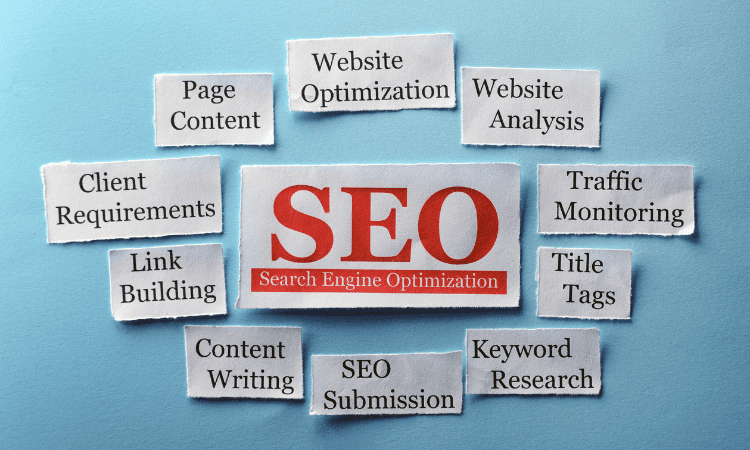Search engine optimization (SEO) is crucial for any online store looking to get found by potential customers searching on Google and other search engines. Proper SEO ensures your Shopify products and content rank high in relevant search results, driving more qualified traffic to your ecommerce website. A Shopify SEO consultant can provide expert guidance on optimizing your online store for maximum visibility and conversions.
So, in this blog, we will explore the top ways to improve your Shopify site ranking with top techniques.
Techniques For SEO Improvement
Keyword Research
Finding the right words and phrases that customers type into search engines is key. Use a tool like Google’s Keyword Planner to identify popular keywords related to your products and content. These are words you will want to include throughout your site to get found in relevant searches. Choosing the best keywords ensures your Shopify store appears when people look for what you offer.
Optimize Page Titles
The title that shows up at the top of a browser tab and in search listings is important for SEO. Each page should have a unique title containing the main keyword for that specific page or product. Don’t make titles too long, keep them short but descriptive so people quickly understand what the page is about. A well-written title informs both search engines and humans.
Enhance Meta Descriptions
A meta description is a short summary that appears under a page’s title in search results. Craft custom descriptions for key pages using relevant keywords. Compelling descriptions encourage people to click through from the search listings to your website. While not as important as page titles, unique meta descriptions can improve click-through rates from search engines.
Improve URL Structure
The web address (URL) for each page should be simple, descriptive of the content, and contain keywords when possible. Using plain language in URLs reinforces relevance for search engines and users. Avoid unnecessary numbers, codes, and parameters.
Optimize Images
All images should have a descriptive file name using keywords, like “red-t-shirt.jpg” instead of “image1234.jpg.” Images also need alternative text (alt text) that describes what’s shown for accessibility and search engines. Properly optimizing images helps them get found and improves page load speeds.
Write Unique Product Descriptions
Don’t use duplicate descriptions across multiple product pages, as that confuses search engines and makes pages seem less relevant. Instead, write a fully customized description highlighting each product’s key features, benefits, and target keywords. Having unique content prevents getting outranked by other sellers with the same product.
Utilize Header Tags
Break up content into logical sections using formatted header tags like H1, H2, H3, etc. The H1 should match the page title, with subheadings using H2s and H3s. This hierarchical structure makes it easier to scan and understand content in context. Incorporate keywords naturally into headers when relevant.
Build an Internal Linking Structure
Link to related products and categories throughout your Shopify website using keyword-rich text for the links, not just “click here.” Descriptive internal links help users navigate and reinforce relevance signals for search engines about your content topics.
Submit a Sitemap
A sitemap gives search engines a roadmap listing all of your website’s pages and when they were last updated. Submit your sitemap through Google Search Console so Google can easily understand and crawl all your content for indexing in search results.
Use Structured Data
Structured data markup code provides search engines with additional details about your content. This allows listings to be enhanced with “rich results” like ratings, prices, availability and more, increasing visibility and click-through rates.
Optimize for Mobile
Since many people search on mobile devices, it’s crucial that your Shopify site displays properly on smartphones and tablets. Search engines prioritize mobile-friendly sites, so having a responsive design is essential for maximizing visibility.
Improve Page Speed
How quickly your pages load is very important for user experience and search rankings. Optimize images, enable browser caching, minimize redirects, and consider using a content delivery network to reduce loading times.
Earn Backlinks
When reputable external websites link back to your content, it signals authority and boosts search rankings. Publish high-quality content that industry influencers and bloggers will want to reference and link to.
Monitor Analytics
Use Google Analytics to analyze where your organic search traffic comes from, which pages perform best, how users navigate through your store, and which content leads to the most conversions. These insights reveal opportunities for improving SEO.
Local SEO
For physical store locations, optimize your online listings across Google Business Profile, Facebook, Amazon Places, and other local directories. Ensuring your name, address, and phone information is consistent builds trust and local search visibility.
Conclusion
While SEO takes consistent effort, the payoff of increased organic traffic and sales makes it well worth the investment. For businesses wanting to take their search engine rankings to the next level, partnering with an experienced b2b SEO service provider like MakkPress Technologies can accelerate results. A professional SEO company brings in-depth knowledge, proven strategies, and the bandwidth to execute a comprehensive optimization program to drive sustained online growth.
So, MakkPress Technologies have over 13 years of experience in improving website ranking, design, speed, maintenance and performance.

As the editor of the blog, She curate insightful content that sparks curiosity and fosters learning. With a passion for storytelling and a keen eye for detail, she strive to bring diverse perspectives and engaging narratives to readers, ensuring every piece informs, inspires, and enriches.










